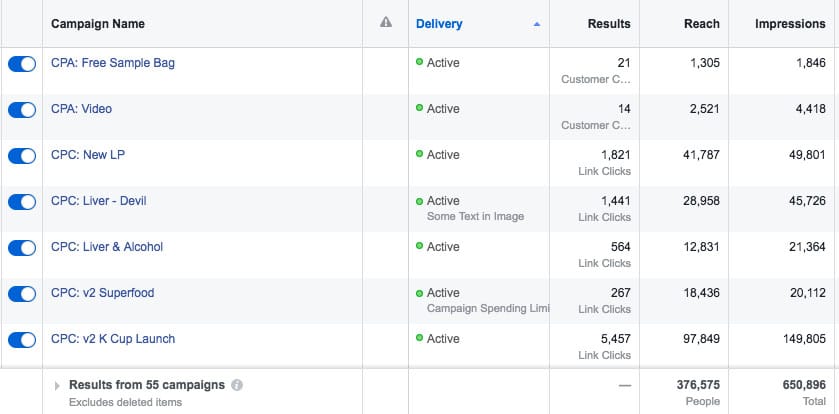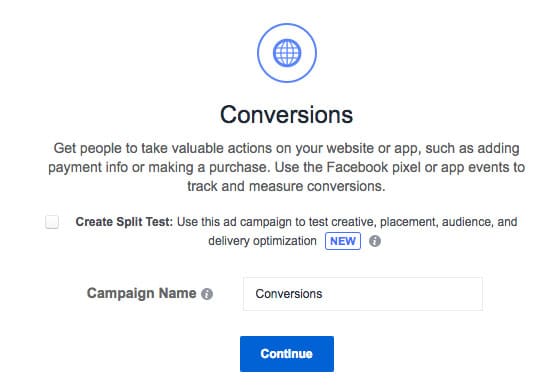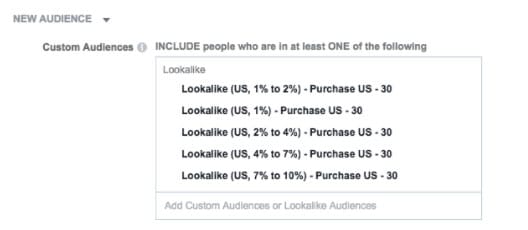As part of the onboarding and educational services that Abacus offers to potential clients, the Abacus team performs in-depth account audits evaluating the advertiser’s existing efforts, methods and performance benchmarks. We’ve discovered common mistakes that advertisers (big and small) make when setting up and optimizing their campaigns. Here is a list of top 7 common mistakes you should avoid:
1. When are you cleaning out your closet? It’s a Mess!
Common problem: Not having consistent and clear labeling for your account structure, campaign and ad set naming conventions.
Why it’s important: Consistent and clear labeling helps account advertisers gain insights faster, make better decisions, pull better reports.
How to fix: we utilize an internal campaign naming builder tool. It’s nothing but a simple Excel naming generator.
➡️ Download a FREE campaign naming builder by Abacus 
2. Are You Sure You Need 74 campaigns to make it work?
Common problem: Running too many campaigns, instead of doing more with less (more performance with fewer campaigns and ads)
Why it’s important: there is nothing bad about creating many campaigns for various markets, needs, promotions, flash sales, optimization objectives, countries. However, the common belief is that by creating more campaigns, one will be able to spend more money and thus drive more performance.
How to fix: define clear KPIs for each funnel, start with 2-3 ad sets and try to scale them with your best audiences, minimize overlap in your audiences, try to keep creative relevant to the ad optimization goal and/or funnel. Introduce new tactics via split tests first.
3. So What is Your KPI really?
Common problem: Not aligning your optimization goals with their targeted audience’ typical conversion funnel. Do you optimize for sales? Adds to cart? Video views? Blog post views? Or all of it at the same time.
Why it’s important: Your choice of KPIs should still be driven by your main business goal (sales, leads, bookings). Trying every single objective in chaotic nature just to get “insights” may negatively impact your account’s optimization as you are feeding the wrong learnings to FB. If you are curious to try new things, consider doing Split Tests
How to fix: align your campaign goals with your funnel objectives and build campaigns around a number of goals that relate to your key performance objective. Ask yourself “Which of the touchpoints/experiences are absolutely important for my potential customer to have in order to make a (purchase/booking/inquiry) decision?”
4. Are you Testing or Just Guessing?
Common problem: lack of hypothesis testing framework (or mindset) leads to a lot of wasted money and, as a result, missed opportunities. Firing the bullets before you fire from the cannon may be a smart strategy when testing new creative, audiences and placements.
Why it’s important: to eliminate the guessing or those gut-driven decisions when numbers could dictate a more rational, grounded decision on what works and what doesn’t. Utilize split tests at the start of your new campaigns or when introducing new creative, experimenting with placements.
How to fix: choose guided campaign creation flow and check the box “Split tests” on the campaign objective page. You’ll be able to choose your test variable on the next page (Creative, Placement, Bidding, and Multiple variables). 
5. Stay relevant, Stay Consistent.
Common problem: do you advertise a free guide in your link ads, but drive people to the home page with multiple product offerings, blog posts, videos and a FREE guide hiding at the bottom of the page? If you are trying to optimize for a particular event on the page, do not throw obstacles (read: content/links/offers/banners) in the way of FB to optimize for the one event you want most.
Why it’s important: ad relevance impacts costs, but the user experience after clicking through ads impacts conversion numbers and your KPI metrics.
How to fix: utilize focused landing pages with a single conversion event per page. This event should be tied to your Facebook campaign’s objective. If you send traffic to a lead form, then only have a single lead form on the dedicated page so a user could have minimum “distractions” and maximum conversion rate from visiting a page to completing a lead form. A good idea is to include your destination URL identifier or name in the ad creative naming. This will help you to easily understand which landing pages convert traffic better.
6. Don’t Mix Lookalike Audiences. They Don’t Taste That Great Together.

Common problem: Mixing various Lookalike audiences (created off of same or different sources) and using them as inclusion targeting in the same ad set.
Why it’s important: lookalike audience is in itself a complete prototype of your seed audience. Facebook will have a harder time understanding who you really are after when you include more than one lookalike in your targeting.
How to fix: Split multiple lookalike audiences across the ad sets. We suggest using a Campaign budget optimization feature for this where budgets will be optimized across ad sets maximizing the overall campaign performance. Create separate ad sets with Lookalike audiences of different sizes (Example: Ad Set 1 will have a Lookalike – 1%, Ad Set 2 will have a Lookalike 1-2%, and Ad Set 3 will have a Lookalike 2-3%).
Tick off the Campaign budget optimization feature on the campaign level assigning either a daily or lifetime budget. You could also set bid controls on all of your ad sets. As always, pre-test different Lookalike audiences (their source and size) using Split Test campaigns. Only move the winners to your Evergreen campaigns with Campaign Budget Optimisation enabled.
7. Show FB What [clients] You Got
Common problem: They are not uploading enough CRM data into the Audiences and not leveraging lookalike audience build feature.
Why it’s important: historically, lookalike audiences based on the CRM data tend to outperform lookalike audiences built off of other sources- pixel, website data. Your prospecting efforts (Top funnel campaigns) should start by looking for the people who are similar to your existing clients.
How to fix: go to the “Audiences” tab and upload your client CRM data (use emails, phones, mobile user IDs). Then hit create a Lookalike audience and choose your similarity % and country.
_____________________________________
Want to get a free account check by our team? Feel free to reach out to us.